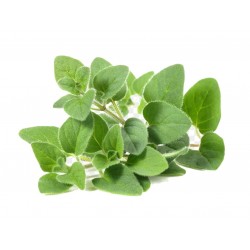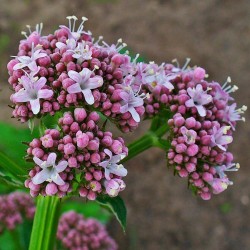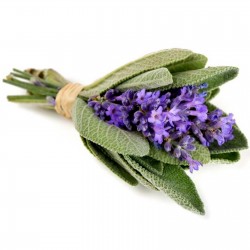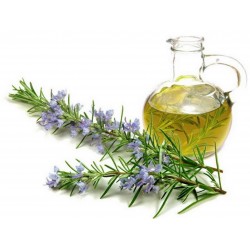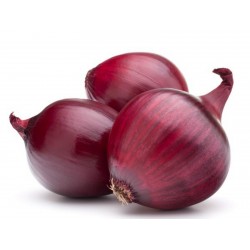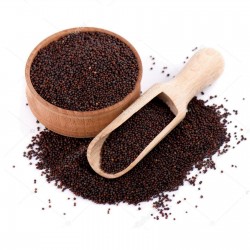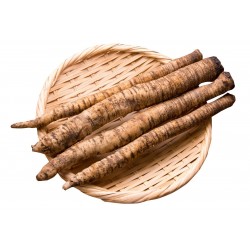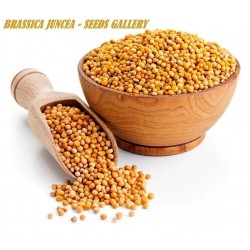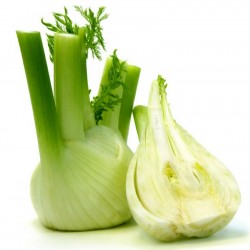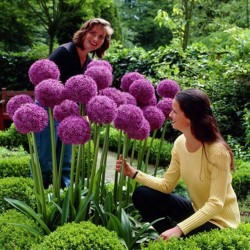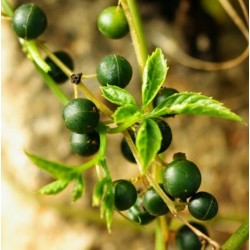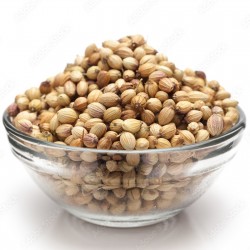
Coriander Seeds (Coriandrum...
السعر
2.05 €
SKU: MHS 117
Seeds Gallery Com,
5/
5
<meta http-equiv="Content-Type" content="text/html; charset=UTF-8" />
<h2><strong>Coriander Seeds Herb (Coriandrum Sativum)</strong></h2>
<h2><span style="color: #ff0000;"><strong>Price for Package of 200 seeds (2g).</strong></span></h2>
<p><b>Coriander</b><span> </span>(<span class="nowrap"><span class="IPA nopopups noexcerpt">/<span><span title="/ˌ/: secondary stress follows">ˌ</span><span title="'k' in 'kind'">k</span><span title="/ɒr/: 'or' in 'moral'">ɒr</span><span title="/i/: 'y' in 'happy'">i</span><span title="/ˈ/: primary stress follows">ˈ</span><span title="/æ/: 'a' in 'bad'">æ</span><span title="'n' in 'nigh'">n</span><span title="'d' in 'dye'">d</span><span title="/ər/: 'er' in 'letter'">ər</span></span>,<span class="wrap"><span> </span></span><span><span title="/ˈ/: primary stress follows">ˈ</span><span title="'k' in 'kind'">k</span><span title="/ɒr/: 'or' in 'moral'">ɒr</span><span title="/i/: 'y' in 'happy'">i</span><span title="/æ/: 'a' in 'bad'">æ</span><span title="'n' in 'nigh'">n</span><span title="'d' in 'dye'">d</span><span title="/ər/: 'er' in 'letter'">ər</span></span>/</span></span>;<sup id="cite_ref-epd_coriander_1-0" class="reference"></sup><span> </span><i>Coriandrum sativum</i>) is an<span> </span>annual<span> </span>herb<span> </span>in the family<span> </span>Apiaceae. It is also known as<span> </span><b>Chinese parsley</b>, and in North America, the stems and leaves are usually called<span> </span><b>cilantro</b><span> </span>(<span class="nowrap"><span class="IPA nopopups noexcerpt">/<span><span title="'s' in 'sigh'">s</span><span title="/ɪ/: 'i' in 'kit'">ɪ</span><span title="/ˈ/: primary stress follows">ˈ</span><span title="'l' in 'lie'">l</span><span title="/æ/: 'a' in 'bad'">æ</span><span title="'n' in 'nigh'">n</span><span title="'t' in 'tie'">t</span><span title="'r' in 'rye'">r</span><span title="/oʊ/: 'o' in 'code'">oʊ</span></span>,<span class="wrap"><span> </span></span>-<span><span title="/ˈ/: primary stress follows">ˈ</span><span title="'l' in 'lie'">l</span><span title="/ɑː/: 'a' in 'father'">ɑː</span><span title="'n' in 'nigh'">n</span></span>-/</span></span>).<sup id="cite_ref-epd_cilantro_2-0" class="reference"></sup><span> </span>All parts of the plant are edible, but the fresh leaves and the dried seeds (as a<span> </span>spice) are the parts most traditionally used in cooking.</p>
<p>Most people perceive the taste of coriander leaves as a tart, lemon/lime taste, but a smaller group of about 3–21% of people tested (depending on ethnicity) think the leaves taste like<span> </span>dish soap, linked to a<span> </span>gene<span> </span>which detects some specific<span> </span>aldehydes<span> </span>that are also used as odorant substances in many soaps and detergents</p>
<h2><span class="mw-headline" id="Botanical_description">Botanical description</span></h2>
<div class="thumb tright">
<div class="thumbinner"><img alt="" src="https://upload.wikimedia.org/wikipedia/commons/thumb/7/7c/Coriandrum_sativum_003.JPG/225px-Coriandrum_sativum_003.JPG" width="225" height="225" class="thumbimage" />
<div class="thumbcaption">
<div class="magnify"></div>
Flowers of<i><span> </span>Coriandrum sativum</i></div>
</div>
</div>
<p>Coriander is native to regions spanning from<span> </span>Southern Europe<span> </span>and<span> </span>Northern Africa<span> </span>to<span> </span>Southwestern Asia. It is a soft plant growing to 50 cm (20 in) tall. The leaves are variable in shape, broadly lobed at the base of the plant, and slender and feathery higher on the flowering stems. The<span> </span>flowers<span> </span>are borne in small<span> </span>umbels, white or very pale pink, asymmetrical, with the petals pointing away from the center of the umbel longer (5–6 mm or 0.20–0.24 in) than those pointing toward it (only 1–3 mm or 0.039–0.118 in long). The<span> </span>fruit<span> </span>is a globular, dry<span> </span>schizocarp<span> </span>3–5 mm (0.12–0.20 in) in diameter. Pollen size is approximately 33 microns.</p>
<div class="thumb tright">
<div class="thumbinner"><img alt="" src="https://upload.wikimedia.org/wikipedia/commons/thumb/6/69/Coriander-2019-5-11_20-17-8-01.jpg/220px-Coriander-2019-5-11_20-17-8-01.jpg" width="220" height="292" class="thumbimage" />
<div class="thumbcaption">
<div class="magnify"></div>
Coriander pollen</div>
</div>
</div>
<h2><span class="mw-headline" id="Etymology">Etymology</span></h2>
<p>First attested in English in the late 14th century, the word "coriander" derives from the<span> </span>Old French:<span> </span><i>coriandre</i>, which comes from<span> </span>Latin:<span> </span><i>coriandrum</i>,<sup id="cite_ref-4" class="reference">[4]</sup><span> </span>in turn from<span> </span>Ancient Greek:<span> </span><span lang="grc" xml:lang="grc">κορίαννον</span>,<span> </span><i>koriannon</i>,<sup id="cite_ref-5" class="reference">[5]</sup><sup id="cite_ref-6" class="reference">[6]</sup><span> </span>derived from<span> </span>Ancient Greek:<span> </span><span lang="grc" xml:lang="grc">κόρις</span>,<span> </span><i>kóris</i><span> </span>(a bed bug), and was given on account of its foetid, bed bug-like smell.<sup id="cite_ref-7" class="reference">[7]</sup><span> </span>The earliest attested form of the word is the<span> </span>Mycenaean Greek<span> </span><i><i>ko-ri-ja-da-na</i></i><sup id="cite_ref-8" class="reference">[8]</sup><span> </span>written in<span> </span>Linear B<span> </span>syllabic script (reconstructed as<span> </span><i><i>koriadnon</i></i>, similar to the name of<span> </span>Minos's daughter<span> </span>Ariadne) which later evolved to<span> </span><i>koriannon</i><span> </span>or<span> </span><i>koriandron</i>,<sup id="cite_ref-Chadwick_9-0" class="reference">[9]</sup><span> </span>and<span> </span><i>koriander</i><span> </span>(German).<sup id="cite_ref-spice_10-0" class="reference">[10]</sup></p>
<p><i><i>Cilantro</i></i><span> </span>is the Spanish word for coriander, also deriving from<span> </span><i>coriandrum</i>. It is the common term in<span> </span>North American<span> </span>English<span> </span>for coriander leaves, due to their extensive use in<span> </span>Mexican cuisine.<sup id="cite_ref-spice_10-1" class="reference">[10]</sup></p>
<h2><span class="mw-headline" id="Origin">Origin</span></h2>
<p>Although native to<span> </span>Iran,<sup id="cite_ref-11" class="reference">[11]</sup><span> </span>coriander grows wild over a wide area of Western Asia and Southern Europe, prompting the comment: "It is hard to define exactly where this plant is wild and where it only recently established itself."<sup id="cite_ref-ZoharyHopf_12-0" class="reference">[12]</sup><span> </span>Fifteen desiccated<span> </span>mericarps<span> </span>were found in the<span> </span>Pre-Pottery Neolithic B<span> </span>level of the<span> </span>Nahal Hemar<span> </span>Cave in<span> </span>Israel, which may be the oldest archaeological find of coriander. About half a litre of coriander mericarps was recovered from the tomb of<span> </span>Tutankhamen, and because this plant does not grow wild in Egypt, Zohary and Hopf interpret this find as proof that coriander was cultivated by the<span> </span>ancient Egyptians.<sup id="cite_ref-ZoharyHopf_12-1" class="reference">[12]</sup></p>
<p>Coriander seems to have been cultivated in Greece since at least the second millennium BC. One of the<span> </span>Linear B<span> </span>tablets recovered from<span> </span>Pylos<span> </span>refers to the species as being cultivated for the manufacture of perfumes; it apparently was used in two forms: as a spice for its seeds and as a herb for the flavour of its leaves.<sup id="cite_ref-Chadwick_9-1" class="reference">[9]</sup><span> </span>This appears to be confirmed by archaeological evidence from the same period; the large quantities of the species retrieved from an<span> </span>Early Bronze Age<span> </span>layer at<span> </span>Sitagroi<span> </span>in<span> </span>Macedonia<span> </span>could point to cultivation of the species at that time.<sup id="cite_ref-13" class="reference">[13]</sup></p>
<h2><span class="mw-headline" id="Uses">Uses</span></h2>
<p>All parts of the plant are edible, but the fresh leaves and the dried seeds are the parts most traditionally used in cooking, Coriander is used in cuisines throughout the world.<sup id="cite_ref-Samuelsson_14-0" class="reference">[14]</sup></p>
<ul class="gallery mw-gallery-packed">
<li>
<ul class="gallery mw-gallery-packed">
<li class="gallerybox">
<div>
<div class="thumb">
<div><img alt="" src="https://upload.wikimedia.org/wikipedia/commons/thumb/f/f8/Corriander_leaves-Cocunut_chutney.jpg/280px-Corriander_leaves-Cocunut_chutney.jpg" width="187" height="140" /></div>
</div>
<div class="gallerytext">
<p>Coriander leaves in coconut<span> </span>chutney</p>
</div>
</div>
</li>
</ul>
</li>
</ul>
<p><span> </span></p>
<ul class="gallery mw-gallery-packed">
<li>
<ul class="gallery mw-gallery-packed">
<li class="gallerybox">
<div>
<div class="thumb">
<div><img alt="" src="https://upload.wikimedia.org/wikipedia/commons/thumb/e/e1/Minty_pani_puri.jpg/280px-Minty_pani_puri.jpg" width="187" height="140" /></div>
</div>
<div class="gallerytext">
<p>Minty pani puri</p>
</div>
</div>
</li>
</ul>
</li>
</ul>
<p><span> </span></p>
<ul class="gallery mw-gallery-packed">
<li class="gallerybox">
<div>
<div class="thumb">
<div><img alt="" src="https://upload.wikimedia.org/wikipedia/commons/thumb/b/be/Onion_Corriander_Paratha.JPG/280px-Onion_Corriander_Paratha.JPG" width="187" height="140" /></div>
</div>
<div class="gallerytext">
<p>Onion coriander<span> </span>paratha</p>
</div>
</div>
</li>
</ul>
<div></div>
<h3><span class="mw-headline" id="Leaves">Leaves</span></h3>
<div class="thumb tleft">
<div class="thumbinner"><img alt="" src="https://upload.wikimedia.org/wikipedia/commons/thumb/5/51/A_scene_of_Coriander_leaves.JPG/220px-A_scene_of_Coriander_leaves.JPG" width="220" height="165" class="thumbimage" />
<div class="thumbcaption">
<div class="magnify"></div>
Coriander leaves</div>
</div>
</div>
<p>The leaves are variously referred to as coriander leaves, fresh coriander, dhania, Chinese parsley, or (in the US and commercially in Canada) cilantro.</p>
<p>Coriander potentially may be confused with<span> </span>culantro<span> </span>(<i>Eryngium foetidum</i><span> </span>L.), an<span> </span>Apiaceae<span> </span>like coriander (<i>Coriandrum sativum</i><span> </span>L.), but from a different<span> </span>genus. Culantro has a distinctly different spiny appearance, a more potent volatile leaf oil<sup id="cite_ref-15" class="reference">[15]</sup><span> </span>and a stronger aroma.</p>
<p>The leaves have a different taste from the seeds, with<span> </span>citrus<span> </span>overtones.<sup id="cite_ref-McGee_16-0" class="reference">[16]</sup></p>
<p>The fresh leaves are an ingredient in many South Asian foods (such as<span> </span>chutneys<span> </span>and salads); in Chinese, Thai, and Burmese dishes; in Mexican cooking, particularly in<span> </span>salsa<span> </span>and<span> </span>guacamole<span> </span>and as a garnish; and in salads in Russia and other<span> </span>CIS<span> </span>countries. In Portugal, chopped coriander is used in the bread soup<span> </span>Açorda, and in India, chopped coriander is a garnish on Indian dishes such as<span> </span><i>dal</i>.<sup id="cite_ref-Moulin_17-0" class="reference">[17]</sup><span> </span>As heat diminishes their flavour, coriander leaves are often used raw or added to the dish immediately before serving. In Indian and Central Asian recipes, coriander leaves are used in large amounts and cooked until the flavour diminishes.<sup id="cite_ref-spice_10-2" class="reference">[10]</sup><span> </span>The leaves spoil quickly when removed from the plant, and lose their aroma when dried or frozen.</p>
<h3><span class="mw-headline" id="Seeds">Seeds</span></h3>
<div class="thumb tleft">
<div class="thumbinner"><img alt="" src="https://upload.wikimedia.org/wikipedia/commons/thumb/8/86/Coriander_Seeds.jpg/220px-Coriander_Seeds.jpg" width="220" height="147" class="thumbimage" />
<div class="thumbcaption">
<div class="magnify"></div>
Dried coriander fruits, often called "coriander seeds" when used as a spice</div>
</div>
</div>
<p>The dry fruits are known as coriander seeds. The word "coriander" in food preparation may refer solely to these seeds (as a spice), rather than to the plant. The seeds have a lemony citrus flavour when crushed, due to<span> </span>terpenes<span> </span>linalool<span> </span>and<span> </span>pinene. It is described as warm, nutty, spicy, and orange-flavoured.</p>
<p>The variety<span> </span><i>C. s. vulgare</i><span> </span>has a fruit diameter of 3–5 mm (0.12–0.20 in), while var.<span> </span><i>C. s. microcarpum</i><span> </span>fruits have a diameter of 1.5–3 mm (0.06–0.12 in). Large-fruited types are grown mainly by tropical and subtropical countries, e.g. Morocco, India, and Australia, and contain a low volatile oil content (0.1-0.4%). They are used extensively for grinding and blending purposes in the spice trade. Types with smaller fruit are produced in temperate regions and usually have a volatile oil content around 0.4-1.8%, so are highly valued as a raw material for the preparation of essential oil.<sup id="cite_ref-18" class="reference">[18]</sup></p>
<p>Coriander is commonly found both as whole dried seeds and in<span> </span>ground<span> </span>form. Roasting or heating the seeds in a dry pan heightens the flavour, aroma, and pungency. Ground coriander seed loses flavour quickly in storage and is best ground fresh. Coriander seed is a spice in<span> </span><i>garam masala</i><span> </span>and<span> </span>Indian<span> </span>curries which often employ the ground fruits in generous amounts together with<span> </span>cumin, acting as a thickener in a mixture called<span> </span><i>dhana jeera</i>.<sup id="cite_ref-19" class="reference">[19]</sup><span> </span>Roasted coriander seeds, called<span> </span><i>dhana dal</i>, are eaten as a snack. They are the main ingredient of the two south Indian dishes<span> </span><i>sambhar</i><span> </span>and<span> </span><i>rasam</i>.</p>
<p>Outside of Asia, coriander seed is used widely in the process for<span> </span>pickling<span> </span>vegetables. In Germany and South Africa (see<span> </span><i>boerewors</i>), the seeds are used while making sausages. In Russia and Central Europe, coriander seed is an occasional ingredient in<span> </span>rye<span> </span>bread (e.g.<span> </span>Borodinsky bread), as an alternative to<span> </span>caraway. The<span> </span>Zuni people<span> </span>of North America have adapted it into their cuisine, mixing the powdered seeds ground with chili and using it as a condiment with meat, and eating leaves as a salad.<sup id="cite_ref-20" class="reference">[20]</sup></p>
<p>Coriander seeds are used in brewing certain styles of beer, particularly some Belgian<span> </span>wheat beers. The coriander seeds are used with orange peel to add a citrus character. Coriander seed is one of the main traditional ingredients in the South African<span> </span>Boerewors, a spiced mixed-meat sausage.</p>
<p>One preliminary study showed coriander<span> </span>essential oil<span> </span>to inhibit<span> </span>Gram-positive<span> </span>and<span> </span>Gram-negative bacteria, including<span> </span><i>Staphylococcus aureus</i>,<span> </span><i>Enterococcus faecalis, Pseudomonas aeruginosa,</i><span> </span>and<span> </span><i>Escherichia coli</i>.<sup id="cite_ref-21" class="reference">[21]</sup></p>
<p>Coriander is listed as one of the original ingredients in the<span> </span>secret formula<span> </span>for<span> </span>Coca-Cola.<sup id="cite_ref-22" class="reference">[22]</sup></p>
<h3><span class="mw-headline" id="Roots">Roots</span></h3>
<div class="thumb tleft">
<div class="thumbinner"><img alt="" src="https://upload.wikimedia.org/wikipedia/commons/thumb/8/84/Coriander_roots.JPG/220px-Coriander_roots.JPG" width="220" height="148" class="thumbimage" />
<div class="thumbcaption">
<div class="magnify"></div>
Coriander roots</div>
</div>
</div>
<p>Coriander<span> </span>roots<span> </span>have a deeper, more intense flavor than the leaves, and are used in a variety of Asian cuisines, especially in<span> </span>Thai dishes<span> </span>such as soups or<span> </span>curry pastes.</p>
<h2><span class="mw-headline" id="Nutrition">Nutrition</span></h2>
<table class="infobox nowrap"><caption>Coriander (cilantro) leaves, raw</caption>
<tbody>
<tr>
<th colspan="2">Nutritional value per 100 g (3.5 oz)</th>
</tr>
<tr>
<th scope="row">Energy</th>
<td>95 kJ (23 kcal)</td>
</tr>
<tr>
<td colspan="2"></td>
</tr>
<tr>
<th scope="row">
<div><b>Carbohydrates</b></div>
</th>
<td>
<div>3.67 g</div>
</td>
</tr>
<tr>
<th scope="row">Sugars</th>
<td>0.87</td>
</tr>
<tr>
<th scope="row">Dietary fiber</th>
<td>2.8 g</td>
</tr>
<tr>
<td colspan="2"></td>
</tr>
<tr>
<th scope="row">
<div><b>Fat</b></div>
</th>
<td>
<div>0.52 g</div>
</td>
</tr>
<tr>
<td colspan="2"></td>
</tr>
<tr>
<th scope="row">
<div><b>Protein</b></div>
</th>
<td>
<div>2.13 g</div>
</td>
</tr>
<tr>
<td colspan="2"></td>
</tr>
<tr>
<th scope="row"><b>Vitamins</b></th>
<td><b>Quantity</b><span><abbr title="Percentage of Daily Value"><b>%DV</b></abbr><sup>†</sup></span></td>
</tr>
<tr>
<th scope="row">Vitamin A equiv.
<div>beta-Carotene</div>
<div>lutein<span> </span>zeaxanthin</div>
</th>
<td>
<div>42%</div>
337 μg
<div>
<div>36%</div>
3930 μg</div>
<div>865 μg</div>
</td>
</tr>
<tr>
<th scope="row">Thiamine<span> </span><span>(B1)</span></th>
<td>
<div>6%</div>
0.067 mg</td>
</tr>
<tr>
<th scope="row">Riboflavin<span> </span><span>(B2)</span></th>
<td>
<div>14%</div>
0.162 mg</td>
</tr>
<tr>
<th scope="row">Niacin<span> </span><span>(B3)</span></th>
<td>
<div>7%</div>
1.114 mg</td>
</tr>
<tr>
<th scope="row">Pantothenic acid<span> </span><span>(B5)</span></th>
<td>
<div>11%</div>
0.57 mg</td>
</tr>
<tr>
<th scope="row">Vitamin B<span>6</span></th>
<td>
<div>11%</div>
0.149 mg</td>
</tr>
<tr>
<th scope="row">Folate<span> </span><span>(B9)</span></th>
<td>
<div>16%</div>
62 μg</td>
</tr>
<tr>
<th scope="row">Vitamin C</th>
<td>
<div>33%</div>
27 mg</td>
</tr>
<tr>
<th scope="row">Vitamin E</th>
<td>
<div>17%</div>
2.5 mg</td>
</tr>
<tr>
<th scope="row">Vitamin K</th>
<td>
<div>295%</div>
310 μg</td>
</tr>
<tr>
<td colspan="2"></td>
</tr>
<tr>
<th scope="row"><b>Minerals</b></th>
<td><b>Quantity</b><span><abbr title="Percentage of Daily Value"><b>%DV</b></abbr><sup>†</sup></span></td>
</tr>
<tr>
<th scope="row">Calcium</th>
<td>
<div>7%</div>
67 mg</td>
</tr>
<tr>
<th scope="row">Iron</th>
<td>
<div>14%</div>
1.77 mg</td>
</tr>
<tr>
<th scope="row">Magnesium</th>
<td>
<div>7%</div>
26 mg</td>
</tr>
<tr>
<th scope="row">Manganese</th>
<td>
<div>20%</div>
0.426 mg</td>
</tr>
<tr>
<th scope="row">Phosphorus</th>
<td>
<div>7%</div>
48 mg</td>
</tr>
<tr>
<th scope="row">Potassium</th>
<td>
<div>11%</div>
521 mg</td>
</tr>
<tr>
<th scope="row">Sodium</th>
<td>
<div>3%</div>
46 mg</td>
</tr>
<tr>
<th scope="row">Zinc</th>
<td>
<div>5%</div>
0.5 mg</td>
</tr>
<tr>
<td colspan="2"></td>
</tr>
<tr>
<th scope="row"><b>Other constituents</b></th>
<td><b>Quantity</b></td>
</tr>
<tr>
<th scope="row">Water</th>
<td>92.21 g</td>
</tr>
<tr>
<td colspan="2"><hr />
<div class="wrap">Link to USDA Database entry</div>
</td>
</tr>
<tr>
<td colspan="2">
<div class="plainlist">
<ul>
<li>Units</li>
<li>μg =<span> </span>micrograms • mg =<span> </span>milligrams</li>
<li>IU =<span> </span>International units</li>
</ul>
</div>
</td>
</tr>
<tr>
<td colspan="2" class="wrap"><sup>†</sup>Percentages are roughly approximated using<span> </span>US recommendations<span> </span>for adults.<span> </span><br /><span class="nowrap"><span>Source: USDA Nutrient Database</span></span></td>
</tr>
</tbody>
</table>
<p>Raw coriander leaves are 92% water, 4%<span> </span>carbohydrates, 2%<span> </span>protein, and less than 1%<span> </span>fat<span> </span>(table). The nutritional profile of coriander seeds is different from the fresh stems or leaves. In a 100 gram reference amount, leaves are particularly rich in<span> </span>vitamin A,<span> </span>vitamin Cand<span> </span>vitamin K, with moderate content of<span> </span>dietary minerals<span> </span>(table). Although seeds generally have lower content of vitamins, they do provide significant amounts of<span> </span>dietary fiber,<span> </span>calcium,<span> </span>selenium,<span> </span>iron,<span> </span>magnesium<span> </span>and<span> </span>manganese.<sup id="cite_ref-23" class="reference">[23]</sup></p>
<h2><span class="mw-headline" id="Taste_and_smell">Taste and smell</span></h2>
<p>The<span> </span>essential oil<span> </span>from coriander leaves and seeds contains mixed<span> </span>polyphenols<span> </span>and<span> </span>terpenes, including<span> </span>linalool<span> </span>as the major constituent accounting for the aroma and flavor of coriander.<sup id="cite_ref-24" class="reference">[24]</sup></p>
<p>Different people may perceive the taste of coriander leaves differently. Those who enjoy it say it has a refreshing, lemony or lime-like flavor, while those who dislike it have a strong aversion to its taste and smell, characterizing it as soapy or rotten.<sup id="cite_ref-McGee_16-1" class="reference">[16]</sup><sup id="cite_ref-25" class="reference">[25]</sup><span> </span>Studies also show variations in preference among different ethnic groups: 21% of East Asians, 17% of Caucasians, and 14% of people of African descent expressed a dislike for coriander, but among the groups where coriander is popular in their cuisine, only 7% of South Asians, 4% of Hispanics, and 3% of Middle Eastern subjects expressed a dislike.<sup id="cite_ref-26" class="reference">[26]</sup></p>
<p>Studies have shown that 80% of identical twins shared the same preference for the herb, but fraternal twins agreed only about half the time, strongly suggesting a genetic component to the preference. In a genetic survey of nearly 30,000 people, two genetic variants linked to perception of coriander have been found, the most common of which is a gene involved in sensing smells.<sup id="cite_ref-27" class="reference">[27]</sup><span> </span>The gene,<span> </span><i>OR6A2</i>, lies within a cluster of olfactory-receptor genes, and encodes a receptor that is highly sensitive to<span> </span>aldehydechemicals. Flavor chemists have found that the coriander aroma is created by a half-dozen or so substances, and most of these are aldehydes. Those who dislike the taste are sensitive to the offending<span> </span>unsaturated<span> </span>aldehydes and at the same time may be unable to detect the aromatic chemicals that others find pleasant.<sup id="cite_ref-28" class="reference">[28]</sup><span> </span>Association between its taste and several other genes, including a bitter-taste receptor, have also been found.<sup id="cite_ref-nature-soapy-taste_3-1" class="reference"></sup><sup id="cite_ref-29" class="reference"></sup></p>
<h2><span class="mw-headline" id="Allergy">Allergy</span></h2>
<p>Some people are allergic to coriander leaves or seeds, having symptoms similar to those of other<span> </span>food allergies.<sup id="cite_ref-aip_30-0" class="reference">[30]</sup><span> </span>In one study, 32% of<span> </span>pin-prick<span> </span>tests in children and 23% in adults were positive for coriander and other members of the family Apiaceae, including<span> </span>caraway,<span> </span>fennel, and<span> </span>celery.<sup id="cite_ref-aip_30-1" class="reference">[30]</sup><span> </span>The allergic symptoms may be minor or life-threatening.</p>
MHS 117 (2g)





